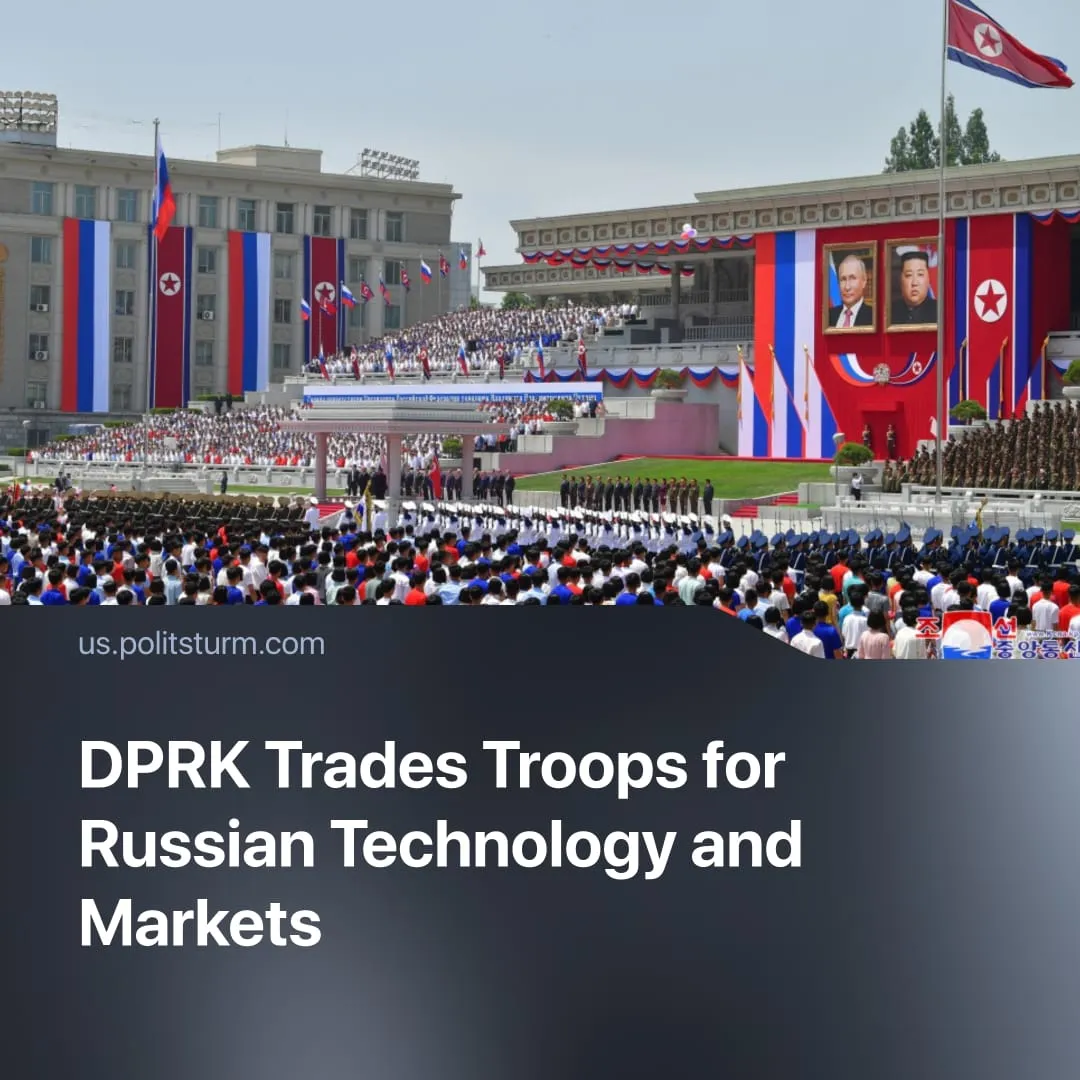The DPRK leadership gained access to new technologies and Russian markets in exchange for the participation of North Korean troops on Russia's side.
Details. Over the past six months, Russia and the DPRK have established contacts in several areas. In May, the Russian ambassador announced that several high-level delegation meetings with the DPRK were planned before the end of the year.
► In July, Foreign Minister Sergey Lavrov revealed plans to resume naval communications and confirmed that the Russian and DPRK leaders had exchanged personal messages.
► In October, North Korea held a military parade to mark the 80th anniversary of its party. It featured a column of DPRK troops who fought near Kursk during the Special Military Operation. The troops marched under the Russian flag and to the Russian song "To Serve Russia" in front of Dmitry Medvedev – former Russian president and the current Chairman of Russia's ruling “United Russia” party.
► New missiles, including the Hwasong-20, were showcased at the parade. These technologies may have been developed jointly with Russia to strengthen defence cooperation in exchange for DPRK troops in the Kursk region.
► During the visit of the Russian delegation, agreements were signed to establish ties between regions of Russia and the DPRK. For example, Oryol Governor Andrei Klychkov proposed cooperation with South Hwanghae Province. Oryol is focused on agro-industry and borders Kursk, while South Hwanghae is the DPRK’s most agriculturally productive region.
Context. Earlier this spring, Russia and the DPRK confirmed the deployment of North Korean forces in the Kursk region to participate in combat operations and fight off the Ukrainian counteroffensive. We covered this event at the time in more detail.
► International sanctions have limited North Korean access to global markets and technologies. North Korea is under UN and Western sanctions, banning coal, iron, exports, joint ventures, arms transfers, and financial transactions.
► The DPRK economy is closely tied to China's. Ties between the DPRK and China are long-standing and strengthening. In October 2024, the two countries celebrated 75 years of diplomatic relations, designating the year as the “Year of DPRK–China Friendship”. China emphasised the importance of deepening strategic communication and cooperation, while the DPRK pledged its “invariable support for China’s interests”. Some reports suggest that over 90% of the DPRK’s foreign trade is conducted with China.
► Along with the growth of Chinese capital's economic power, isolationist rhetoric in North Korea has intensified. In 2024 Kim Jong-un ordered the demolition of the reunification monument. In October 2024, the DPRK blew up the roads and railways on its side that connected to South Korea, symbolically severing ties.
Important to know. In recent years, the Chinese economy has grown to the point where it is threatening US hegemony. The US, under Trump's leadership, is now primarily focused on combating China as its primary imperialist rival.
► North Korean aid in the ‘SMO’ represents the first example of military support from a Chinese client state to another. The PRC, seeking to preserve its influence within the “anti-Western bloc”, has an interest in preventing a Russian defeat. This diverts US attention and deepens Moscow’s dependence on China.
► Far from representing socialism, the DPRK operates as a dependent puppet of the Russia-China imperialist bloc.


